A History of Synth-Pop in 50 Essential Songs

The sociopolitical detritus of World War II, the ones and zeroes of the new digital realm—from these bits and pieces, joy sprung anew. Artists and inventors across postwar Germany, France, Japan, and the United States shook off the rubble and employed a changed world’s technologies to make beautiful, challenging things. The processing methods and power of computers began to feed into the creation of music in earnest in the late 1940s and 1950s. They could mimic old sounds and create fresh ones, repeat figures without fatigue, even randomize and control audio in ways unknown to flesh, breath, and tangible materials.
Despite the impractical nature of this earliest equipment, in short order some musicians tried to insert digitally driven compositions into public consciousness. Best known for his big-band and orchestral music being adapted for Warner Bros. cartoons, through the 1950s Raymond Scott built room-sized tech to construct music for the masses best consumed as calming computer lullabies or the future of aural corporate branding. And the first piece of electronic music resembling a “hit”—repeatable, recognizable—came out of the BBC’s Radiophonic Workshop, as Delia Derbyshire and Ron Grainer nailed down the theme for the sci-fi serial Doctor Who in 1963.
As technology got ever smaller and cheaper, the processes of making, recording, and producing music were spread and even combined. The use of synthesizers and other electronic instruments and equipment not only informed the work of existing superstars, it gave rise to entire genres and generations of new performers. For all of its critiques as aloof and isolated, “synthpop” in fact is less about the synth and more about the pop, a product of movements and musicians trying to democratize musical performance.
Three years ago Treble surveyed some of the great electronic albums of the 1990s, a decade unmatched in the reach, acceptance, and stylistic spread of digitally created music. However, it clearly included LPs that were decidedly not pop, and some that were even anti-pop. This year marks a slew of major birthdays of synth-driven albums that defined (or continue to define) the public zeitgeist, among them the 20th anniversary of the release of Madonna’s last great dance album Music, the 25th for Bjork’s Post, and most importantly the 30th for Depeche Mode’s Violator. Sadly, one of the pioneers of synth-pop, Florian Schneider, passed away, but if anything we hope to show how the legacy of bands like Kraftwerk, and specifically Kraftwerk, helped to shape the future of popular music. So here we present a brief history through 50 of the best synth pop songs that crashed charts and ears, resonating deep into the future with critics and fans alike.
1976
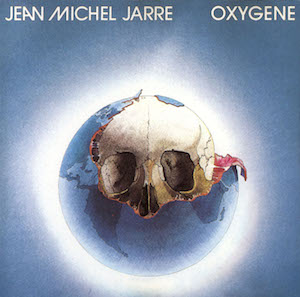
Jean-Michel Jarre – “Oxygene Part 4”
This French musician’s career intersects disco, new age, and event/installation soundtracks, which doesn’t sound like a formula for either mass appeal or critical acclaim. But back in the days before major networks had the budgets to play big hits behind sports highlights and commercial bumpers, local stations found a sweet spot of instrumental beds whenever it was time for a pitching change or to make a promo for your next public TV pledge drive. This wiggling, wobbling instrumental section of Jarre’s album-length suite from 1976 no doubt wedged into the [un]consciousness of Generation X in small doses over many years, as stalagmites might form from endlessly dripping water. – Adam Blyweiss
1977

Suicide – “Cheree”
More punk than pop, more organ drone than punk, Suicide laid the groundwork for the producer-with-charismatic-vocalist archetype by presenting it at its most stripped down and primitive. Martin Rev provided the pulsing keyboard backdrop to Alan Vega’s eerie ghost-of-Elvis wails and moans, and much of it was a hypnotic David Lynch nightmare, but occasionally it yielded a proper pop song. Although, well, even those were kind of unsettling in their own way. “Cheree” is Suicide’s version of a love ballad, filtered through a distorted Velvet Underground drone and bits of keyboard twinkle, and it’s actually quite pretty for sounding as seedy as it does. As tender a moment as you can find amid the broken bottles and safety pins of New York punk. – Jeff Terich

Donna Summer – “I Feel Love”
This song wasn’t merely the future of disco, positioned as it was at the end of Summer’s Giorgio Moroder-produced time-hopping concept album I Remember Yesterday. As that genre dissolved into the ether, his hypnotic grooves and her come-hither soprano stood as transcendent reminders of the best it could offer and informed its replacements—not just synth-pop, but house and techno and all of their derivatives ad infinitum. – Adam Blyweiss
1978
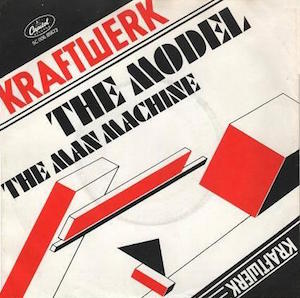
Kraftwerk – “The Model”
The Dusseldorf electronic pioneers’ slot in this timeline could easily be occupied by “Trans-Europe Express,” but that motorik groove and its neighbors on the album of the same name were better and more importantly used as sample sources informing hip-hop from the old school. Instead, this cut from The Man-Machine is Kraftwerk’s first real entry in the genre, as their deceptively perky synths help tell a tale of celebrity obsession in a radio-friendly timeframe. – Adam Blyweiss
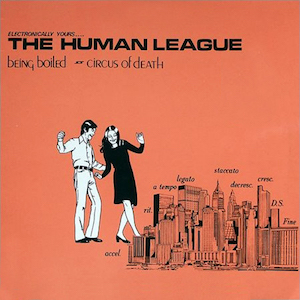
Human League – “Being Boiled”
British icons The Human League had much bigger pop moments—the he-said/she-said anthem “Don’t You Want Me,” the upbeat synth-funk of “(Keep Feeling) Fascination,” the glossy Jimmy Jam and Terry Lewis polish job of “Human”—but “Being Boiled” is the point of origin. An arty, minimalist and sinister analog slither, “Being Boiled” hitches a ride on Kraftwerk’s robot caravan and emphasizes slightly more flesh and blood than their German forebears. But only slightly; there’s some irony in a group this cold and eerie being called The Human League, at least at this stage. You’d never know that in eight years they’d embrace lite-R&B and neon schmaltz so readily. – Jeff Terich
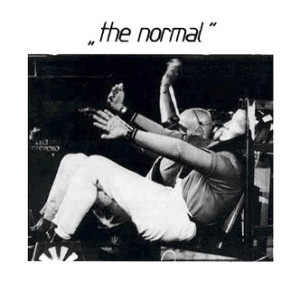
The Normal – “Warm Leatherette”
The Normal released only one single during their career, and it’s an absolute monster. The solo synth-punk project of Mute Records founder Daniel Miller, The Normal landed on the map with a thump, a buzz and a metallic squink with 1978’s “Warm Leatherette,” a two-note melody that’s technically really just a one-note melody that pulses and grinds and drafts a monodirectional roadmap to electro-industrial. It sounds like a sexbot factory in your weird neighbor’s garage, and its Ballard-inspired lyrics of flaming car-crash ecstasy are tantalizingly horrific. The primitive, almost anti-musical nature of the track feels miles apart from Tame Impala or, say, MGMT, but the direction from here to Soft Cell’s “Sex Dwarf” is essentially just a straight line. – Jeff Terich
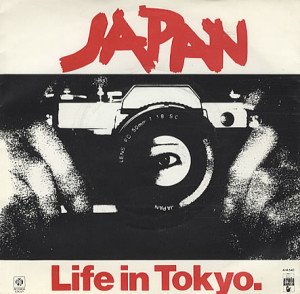
Japan – “Life in Tokyo”
Japan went from a kind of trashy, glam-rock inspired sound to the kind of spacious abstraction that would precede Talk Talk’s later forays into studio experiments all in the course of about a half-decade, which is a staggering evolution no matter how you look at it. Their peak came right around the midpoint, starting with this flashy, mirrorball collaboration with disco auteur Giorgio Moroder. “Life in Tokyo” is driven by the group’s art-pop songwriting, but dressed up with Moroder’s pulsing synth arpeggios. It’s a crucial step in the bridge between the disco era and new wave, with “Heart of Glass” behind it and “Planet Earth” just ahead. – Jeff Terich
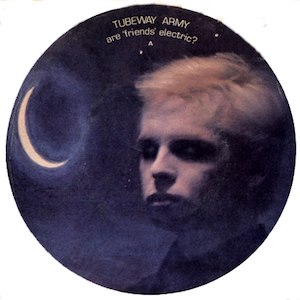
Gary Numan/Tubeway Army – “Are ‘Friends’ Electric”
Tubeway Army’s first album leaned heavier on guitars, and Numan’s mega-hit single “Cars,” released the same year as “Are ‘Friends’ Electric,” maximized the Moogs. This, however, sat somewhere between post-punk chill and analog A.I., its ominous neon atmosphere offset by the heavy backing of actual drums. The juxtaposition of an organic rhythm section against the fat buzz of synthesizers and the intermittent “BEEE-OOO!” somehow only heightens the intensity of the Philip K. Dick-inspired dystopia jam. It didn’t have the same impact of “Cars,” of course, if only because the hooks aren’t quite so immediate, but the dense layers to “Are ‘Friends’ Electric” offer an even more satisfying headphone experience. – Jeff Terich
1980
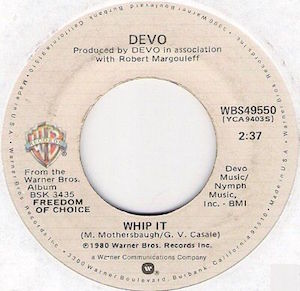
Devo – “Whip It”
“Whip It” is as much of a blessing as a curse for Devo, a band who used synths but didn’t often make them the center of their songwriting, and whose music was often anything but pop—were this space occupied by their absurdist origin story “Jocko Homo,” well, it wouldn’t really fit. But the Ohio new wave group’s MTV moment, complete with signature stacked-cylinder hats, is the one that maybe accidentally defined synth-pop for an entire generation: hyper-catchy keyboard hooks, uptempo disco beats and dadaist aphorisms. “When a problem comes along, you must whip it” isn’t necessarily helpful advice, but as motivational phrases from conceptual surrealists go, it’s not half bad. – Jeff Terich
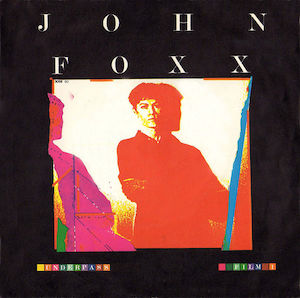
John Foxx – “Underpass”
John Foxx’s Metamatic sounds like its artwork looks—the dapper ex-vocalist of Ultravox reaching toward some glowing portal, a mysterious form of technology, the supernatural or perhaps some combination of the two. The all-electronic album, primarily made with an ARP Odyssey and a Roland drum machine, is dystopian and futuristic in the same way that Blade Runner is—stylistically unsettling, and nothing like the future turned out. Based on Foxx’s lyric, it’s not a future worth idealizing (“now it’s all gone/World War something“), and yet “Underpass” makes this synthetic future sound creepily appealing in its own strange way, its massive hook as chilling as its reverb-addled snare sound is massive. – Jeff Terich
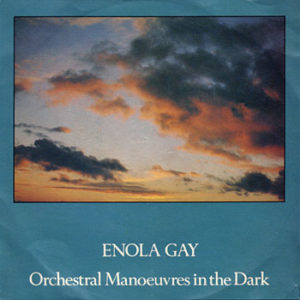
Orchestral Manoeuvres in the Dark – “Enola Gay”
It’s both interesting coincidence and fascinating contrast that the synth-pop era came to flourish during an era of Cold War paranoia. Along with Ultravox’s “Dancing with Tears in My Eyes,” OMD’s “Enola Gay” subtly highlights apocalyptic terror within a bright and seemingly fun pop song by invoking the name of the first aircraft to drop a nuclear bomb. Tune out the words and you not even notice that it’s a much darker song than its upbeat melody lets on (“It shouldn’t ever have to end this way“), but as synth-driven dancefloor mega-hits go—selling more than 5 million units worldwide since its release—this one’s pretty bleak. – Jeff Terich
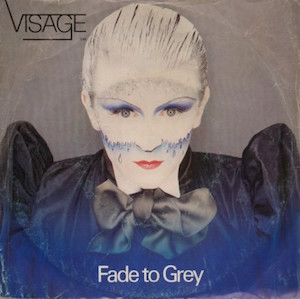
Visage – “Fade to Grey”
Visage’s signature song originally had the title “Toot City,” and boy should we be thankful that didn’t stick. “Fade to Grey,” the UK band’s second single and most recognizable hit, stitched together New Romantic glamor with dark, gothic theatricality to yield a sensual, slithering creature of subterranean disco. Vocalist Steve Strange embodied the eyeliner-streaked image of early ’80s synth stardom, while the French-sung backing vocals of Brigitte Ahrens added a dose of mystique and ethereality to the pulsing hit. But at the heart of this sly, seemingly style-over-substance single is the team of ringers at the core of the group, including Midge Ure and Billy Currie of Ultravox, that reinforced the melody and groove beneath the spotlights and pale blue mist. – Jeff Terich
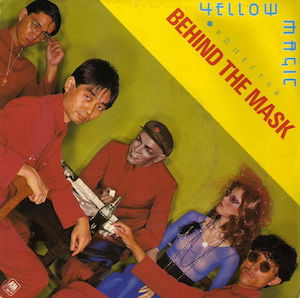
Yellow Magic Orchestra – “Behind the Mask”
Haruomi Hosono has been getting some well-deserved appreciation these days, thanks to several reissues of his classic solo albums from Light in the Attic Records. But it was Yellow Magic Orchestra, his band with Ryuichi Sakomoto (whose 2017 record async was a triumph of texture) and Yukihiro Takahashi, a band originally conceived in part as a parody of the West’s orientalism, that would help shape electronic pop music. Albums like their eponymous debut and 1979’s Solid State Survivor were foundational for genres such as techno, city pop, ambient house, hip-hop, and even video game music, influencing a wide range of artists, including The Orb, Tetsu Inoue, and Afrika Bambaataa. “Behind the Mask,” which was originally written for a Seiko commercial of all things, showcases their immediacy and creativity: from Sakamoto’s vocoder vocals prefiguring Daft Punk, to the catchy synth melody, to Chris Mosdell’s lyrics, which take inspiration from W.B. Yeats’s poem “The Mask” and Japanese Noh theater.- Tyler Dunston
1981
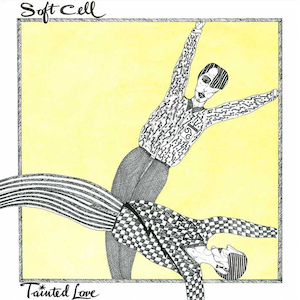
Soft Cell – “Tainted Love”
Like many one-hit wonders (in the U.S. anyway—in the UK they had five top-5 singles), Soft Cell’s “Tainted Love” has a fascinating history. The song was first recorded by Gloria Jones as the B-side of a 1965 single that went nowhere. Eight years later, it was rediscovered by British DJ Richard Searling, who helped make it a hit in England’s Northern Soul scene. Soft Cell covered the song in 1981, scoring a massive hit on both sides of the Atlantic, and four years after that, Coil put their own sepulchral spin on it, turning it into an elegy for those lost to the AIDS epidemic. (Soft Cell frontman Marc Almond made a cameo in Coil’s music video, appearing as an angel of death in a leather jacket.) And then there’s Marilyn Manson’s cover.
But you don’t need to know any of that history to be moved by Soft Cell’s “Tainted Love” on a purely musical level—that one synthesizer that sounds like a barcode scanner, that other synthesizer that goes DUN DUN and sounds like nothing else I can think of. By wrapping the song in icy synths that glow like buzzing neon, Soft Cell bring out the paranoia at the heart of “Tainted Love”; Jones may have only been singing about love gone bad when she sang “I’ve lost my light / For I toss and turn I can’t sleep at night,” but Almond taps into something more sinister, something that millions of people couldn’t run away from. It might be the only song you know Soft Cell for, but four decades later, “Tainted Love” remains not only a landmark of pop music, but LGBTQ history.- Jacob Nierenberg
1982
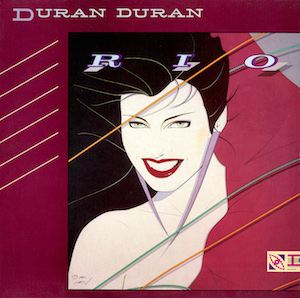
Duran Duran – “The Chauffeur”
We need to get this out of the way right now: Duran Duran was every bit the super-team of instrumental ringers as shredders or funk slappers in the ’80s, and to label them a synth-pop band is to overlook the unstoppable rhythm section of John Taylor and Roger Taylor. That out of the way, “The Chauffeur,” the eerie and minimal art-pop dirge that closes out their legendary Rio album, is as compelling a synth-pop song as ever was recorded. At once a strange and abstract moment of diversion from a well-coifed UK group known for delivering hits and a somewhat infamous track for its erotic, not-safe-for-MTV video that referenced a scene in infamous erotic/exploitation art film The Night Porter, “The Chauffeur” is how cover stars on trashy pop mags break out of everyone else’s comfort zone. – Jeff Terich
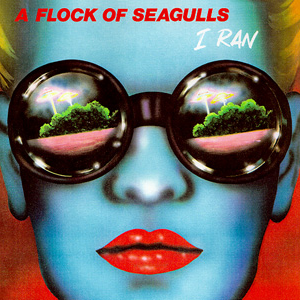
A Flock of Seagulls – “I Ran (So Far Away)”
Despite its famous sonic anchor of Paul Reynolds’ guitar chords, this group’s biggest hit still tracks as synthpop on the strength of Ali Score’s artificial drums, Mark Score’s keyboard whines, the echoing and distant production covering it all—and, of course, the debut album from which it came. Frankly, this might be the stereotypical synthpop track: a new wave release date and wardrobe to match, and thematic desperation and isolation in a story where Our Hero is outrunning a failed love and then failing to outrun an alien abduction. – Adam Blyweiss
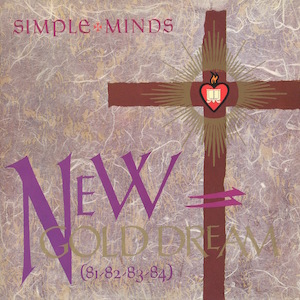
Simple Minds – “New Gold Dream (81/82/83/84)”
Simple Minds have the distinction of having scored a massive hit with a song that Billy Idol passed on, as well as having featured Herbie Hancock on one of their standout deep cuts. They also more or less eased away from synth-pop as an aesthetic once their songs took on stadium-sized ambition, though they didn’t move on until they perfected it. The dense strata of keyboards that drives the uptempo “New Gold Dream” feels almost like shoegaze when it all comes together. The bassline and rhythm remain constant throughout, putting greater burden on vocalist Jim Kerr perhaps, but it’s the interplay between synth and guitar that make this anthem feel like it could go on forever, never quite changing its direction yet never quite repeating itself either. – Jeff Terich
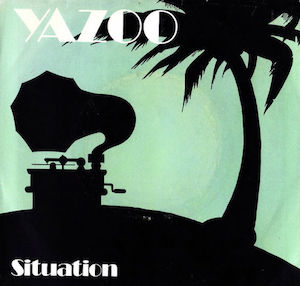
Yaz – “Situation”
Electronic music owes so much to Vince Clarke. His analog bleeps and programmed beats can be heard in three of the most iconic groups of the ’80s, at least for part of their runs: Erasure, Depeche Mode (though only Speak & Spell), and Yaz, his collaboration with vocalist Alison Moyet. (In the UK they were known as Yazoo, though a lawsuit threat from a blues label and a similarly named band in the U.S. basically put an end to that.) Their debut album Upstairs at Eric’s didn’t shy away from the new era of synthetic sounds—the artwork for the album depicts two mannequin figures at a table, separated from their lower halves—but more so than any other act at the time, Yaz emphasized the pop half of the equation above all, aided in no small part by Moyet’s husky, soulful singing voice. “Situation,” originally a b-side, became a club hit in the U.S. and ended up added to the stateside Upstairs at Eric’s tracklist, and for a quickly written and produced bonus, it’s an undeniable shot of energy and joy. In truth it’s really an R&B song fed through racks of Rolands, driven by a call-and-response chorus and Moyet’s ubiquitous echoing laugh, later sampled in “Macarena.” Like I said, Clarke is owed so much… – Jeff Terich
1983
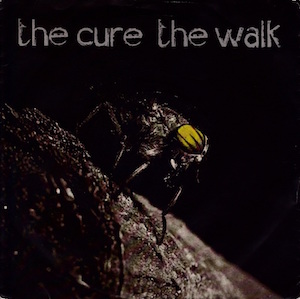
The Cure – “The Walk”
You’ve heard of Schrödinger’s cat? Let’s introduce you to Schrödinger’s song about a dog, a track that is both nothing like The Cure and yet exactly like The Cure. Founding members Robert Smith and Lol Tolhurst were all that were left of the band following the release of and tour for Pornography. Nevertheless, they were itching to record this song and enlisted multiple keyboards, an Oberheim drum machine, and Japan producer Steve Nye to get it done. It’s a vision of human love as witnessed through canine eyes, and a perfect moment when post-punk largely (and successfully) abandoned the rock sounds that traditionally conveyed its weird-ass stories. – Adam Blyweiss
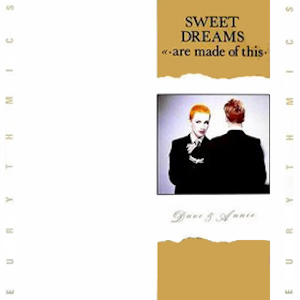
Eurythmics – “Sweet Dreams (Are Made of This)”
But seriously, what didn’t go right for this duo’s second single? Annie Lennox dueled Dave Stewart in the signature bass synth riff, portrayed the demure diva stung by their recently failed larger band (The Tourists) and relationship, and her androgynous styling made for some of the most vivid imagery of the golden age of music videos. Stewart was no slouch either, stringing together the sounds of secondhand and prototype equipment through exactly one microphone. Hold your head up, yes, but damned if you—and they—don’t earn fist-bumps and foot-stomps as well. – Adam Blyweiss
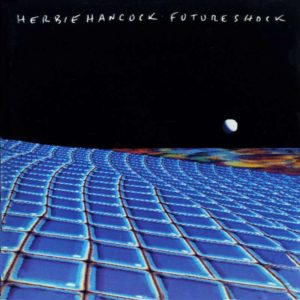
Herbie Hancock – “Rockit”
What happens when you bring together one of the first turntablists (Grand Mixer D.ST), one of funk’s most underappreciated outfits (Material), and one of the world’s master jazz pianists? You get a timeless slice of skronky, vocodered synth-funk that stands out in an age filled with electronic one-hit wonders. Matched with a creepy Godley & Creme video starring chorus lines of animatronic limbs, “Rockit” gave Hancock both a sudden dose of edgy street cred and a shelf full of industry awards. – Adam Blyweiss
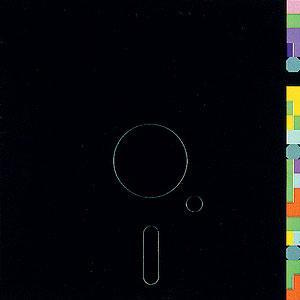
New Order – “Blue Monday”
The most recognizable and arguably most legendary synth-pop single of the past 40 years is the one that likely nobody saw coming save for New Order themselves. After making the transition from being three-quarters of Joy Division just a couple years earlier, and for the most part still sounding quite a bit like Joy Division, the Manchester post-punk band—one that still primarily employed a guitar-bass-drums lineup—fully embraced synthesizers and sequenced a stunning seven minutes of dancefloor ecstasy that likewise also partially gave center stage to one of New Order’s most recognizable elements: Peter Hook’s high-on-the-neck bass leads. But the attraction is the skipping synth bassline and the robo-BPMs. Fittingly, it was packaged in an elaborate floppy-disk 12-inch sleeve designed by longtime collaborator Peter Saville, and the cost was so high to have them printed that Factory Records lost money on every unit despite it selling more than a million copies and being for a time the best selling 12-inch single of all time. Which helps explain why the famed Manchester label eventually folded (along with a number of other poor business decisions), though club-ready anthems like this are why New Order endured. – Jeff Terich
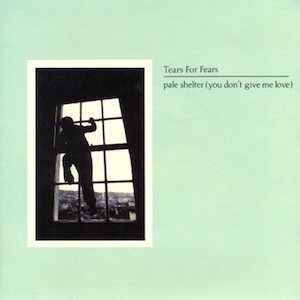
Tears for Fears – “Pale Shelter”
Early synth-pop often concerned itself with sci-fi (sometimes dystopian) escapism, glam camp or bubblegum chewing satisfaction, but one of the biggest changes that Tears for Fears offered with their debut The Hurting was not so much in their musical techniques but in their lyrical themes. The band explored themes of pain and trauma, inspired in large part by primal-scream therapy psychologist Arthur Janov, and that process led to the creation of music that kind of killed everyone’s buzz at the time. Reviews from the likes of NME were ruthless at the time, skewering the duo for their unrelenting miserablism, but songs like “Pale Shelter” have aged remarkably well largely because castigating an artist for exploring grief through music seems not only outdated but hopelessly cruel. That said, for a song about trying to get through to your cold, distant parents, “Pale Shelter” pulses with energy, an entire universe of synthesized sounds wrapped around solitary accents of acoustic guitar. – Jeff Terich
1984
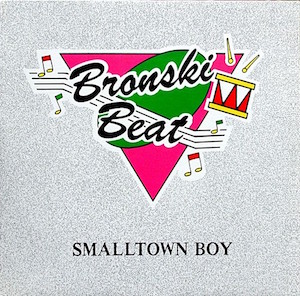
Bronski Beat – “Smalltown Boy”
The semi-autobiographical “Smalltown Boy” became Bronski Beat’s first hit and signature song early on in their career, showcasing that heart-wrenching emotion and vulnerable honesty had a place alongside ethereal synth-hooks. Jimmy Somerville’s falsetto vocals tremble with ache, soulfully recalling a youth traumatized by small-town prejudice and homophobia. But “Smalltown Boy” is a triumph in spite of that trauma, an absolute cracker of an anthem that sounds as timeless today as when it was released, a tender moment on an album of club-ready pop that tells what was, at the time, a far too-seldom heard story. – Jeff Terich
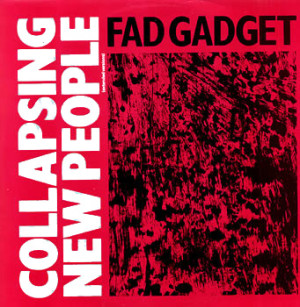
Fad Gadget – “Collapsing New People”
Frank Tovey’s music has never comfortably existed in one particular space. It’s post-punk here, dark cabaret over there, frequently verging on industrial. “Collapsing New People” is arguably all of these at once, and though it’s a collaboration with Einsturzende Neubauten—and is even named in tribute to the German noise artists—just see how well it slides in between Soft Cell and Depeche Mode. Of course these spaces were, at the time, all very fluid and collaborative (notice how often Marc Almond showed up on Coil records), so there’s nothing contradictory about this early industrial gem also being a highlight of synth-pop. Think of it as the more sinister counterpart to “People Are People”—the metallic percussive elements are only there to hold together the hook-laden, buzzing core. – Jeff Terich
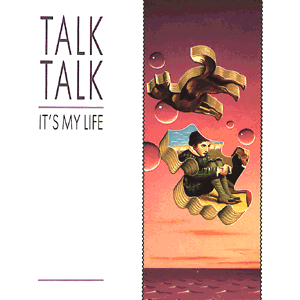
Talk Talk – “It’s My Life”
Talk Talk didn’t have a creative arc so much as a hairpin turn. Before they became the post-rock forefathers that music writers speak of with hushed reverence, they were just another new wave group messing around with synthesizers. (They even toured with Duran Duran in 1981.) But even if they never went on to record their twin masterpieces, Spirit of Eden and Laughing Stock, Talk Talk would have been remembered as a very different band for “It’s My Life.” You can almost hear Alex Trebek asking: This song was a hit for No Doubt in 2003, but it first appeared on the charts back in 1984, when it was written and performed by Talk Talk—”don’t you forget.”
Still, the pieces of the band who would later record “I Believe in You” and “After the Flood” can be heard on “It’s My Life”: Mark Hollis’ sighing but soulful vocals, Lee Harris’ dynamic drumming, (unofficial member) Tim Friese-Greene’s rich and psychedelic production. Even as Hollis stubbornly maintained creative control, often to commercially alienating ends—he refused to lip-sync in one of the song’s music videos and sabotaged the other with over-the-top gestures—he sang “It’s My Life” like the genuine synth-pop jewel it was. Unlike many pop acts of the 1980s, Talk Talk ditched the synthesizers as the band progressed, carving out a sound that was darker and warmer and quieter. It’s hard to argue with what they gave us, but it’s also hard to argue that “It’s My Life” is anything short of synth-pop perfection. – Jacob Nierenberg

Prince – “I Would Die 4 U”
Prince said that he didn’t appreciate it when people called his music “magic,” because he played funk, and “funk is about rules.” But I beg forgiveness of His Purple Majesty for making an exception this one time. “I Would Die 4 U,” one of the simplest and shortest songs on his magnum opus Purple Rain is, I say without hesitation, magical. It is funky, though it’s less Rick James, more a vision of synth pop to come. It helps that Prince’s narrative takes a metaphysical turn on this high-energy laser beam of a pop vision: “I’m not a woman, I’m not a man, I am something that you’ll never understand.” Transcendence in less than three minutes, delivered through a portal to the future. – Jeff Terich
1985
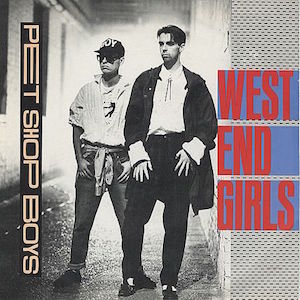
Pet Shop Boys – “West End Girls”
The thing most people forget—or at least fail to consider—about this song is that it’s essentially a rap track! By turns inspired by T.S. Eliot, James Cagney, and “The Message,” Chris Lowe and Neil Tennant transported the class struggles seen by them all to the rough east and posh west sides of London. Tennant’s deadpan over a grumbling bass synth line and droning midtone described poor young men’s dreams of escape by corralling some fancy strange, even if only for a night. – Adam Blyweiss
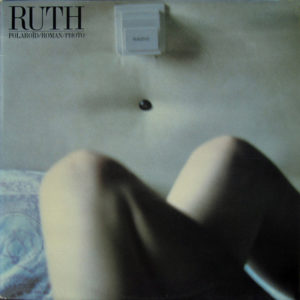
Ruth – “Polaroid/Roman/Photo”
The non-organic nature of synthesized music—its “coldness”—long stood as the greatest critique against it. The old “drum machines have no soul” argument. Naturally this would eventually lead to a European offshoot of post-punk and synth-pop that would come to be known as “coldwave,” a kind of detached and eerie underground that operated a lot like DIY punk, or rather the internet before there was a consumer, household internet—bedroom Roland and Moog enthusiasts sharing tapes and information as well as releasing some delightfully weird music. France’s Ruth weren’t entirely frostbitten, but the title track of their 1985 debut employs robotic synth drones and clicking-camera effects to give the illusion of a Polaroid flash amid an unexpected flash of horns and alternately campy and emotionless vocals. The weirdest corners of synth-pop in the ’80s were also sometimes the best, and if it’s not too much trouble, this could certainly use yet another reissue. Jeff Terich
1988
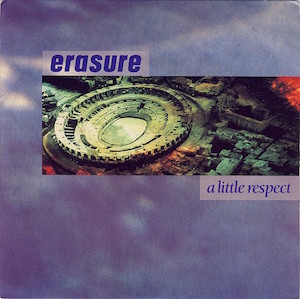
Erasure – “A Little Respect”
If there’s a synth-pop Mount Rushmore, surely Vince Clarke is one of the figures carved on its rockface. He appears here twice, as does a former band, and there are a handful of other short-lived projects we left out. But Clarke’s most enduring project is also his most purely pop, with the chart performance to prove it. Erasure had 13 top 10 singles in the UK since 1986, plus three U.S. top 40 singles, including this standout opener of 1988’s The Innocents. At a lean 3:33, Clarke and Andy Bell compress synth-pop innovation and disco-pop immediacy into a perfect moment of transcendent pop glory. – Jeff Terich
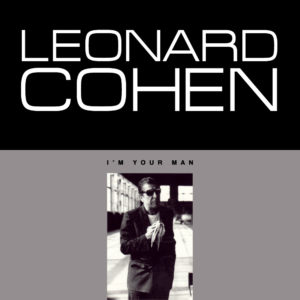
Leonard Cohen – “First We Take Manhattan”
Leonard Cohen didn’t transition easily into the 1980s. “Hallelujah” is a standard now, thanks to Jeff Buckley’s immortal reinterpretation of the song, but at the stage of Cohen’s career during which it was released, it went mostly unnoticed—Various Positions didn’t even show up on the charts in the U.S. Neither did its follow-up, I’m Your Man, but it sold better worldwide and earned the Canadian singer/songwriter his share of “return to form” praise. Only it wasn’t; leadoff track “First We Take Manhattan”—written by Cohen but recorded two years earlier by Jennifer Warnes—made it perfectly clear this was an entirely new form for the shades-wearing, banana-chomping troubadour. This one was a bit glossier, a bit more modern, one with a studio full of synthesizers instead of a dark room with an acoustic guitar. Still too weird to fit in so comfortably next to the pop of MTV in 1988, “Manhattan” nonetheless redefined a veteran artist’s career with a dark take on sophisti-pop that felt a little sleazy, a little dangerous, but above all reinforced that the previous generation’s heroes could still somehow stay ahead of everyone else. – Jeff Terich
1990
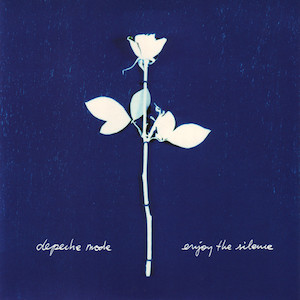
Depeche Mode – “Enjoy the Silence”
Sharing spiritual kinship with their breakthrough single “Just Can’t Get Enough,” this blockbuster single from the band’s 1990 album Violator—trailing an altogether different powerhouse in “Personal Jesus“—finds Depeche Mode’s programming finally warming the icy chill of their back catalog. As cheerleading and populist a song as synthpop has ever seen, the messages in Martin Gore’s words and Dave Gahan’s voice mature from mere lust in 1981 to love and direction lost in 1990, their protagonist as unresolved and dramatic as the chords cycling back from chorus to verse. – Adam Blyweiss
1994
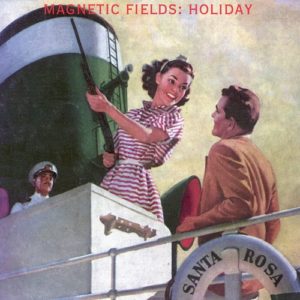
Magnetic Fields – “Take Ecstasy With Me”
Describing Stephin Merritt’s primary outfit as a “synth-pop” group always feels a little off, particularly given the anything-goes sprawl of later albums like 69 Love Songs, though synth-pop is exactly what Holiday was. Perhaps the best that the ’90s had to offer, even. It’s perhaps no coincidence that one of Merritt’s most pulsing, bass-heavy, danceable moments—one that also prominently features a banjo, no less—also references a club drug. But amid the rave-ready thump and triumphant synths in its glorious chorus is a narrative of people who’ve seen better days, a couple at the end hoping to shore up a few more good times by sowing some wild oats a little too late. It won’t work, but Merritt makes it sound like a heroic last stand. – Jeff Terich
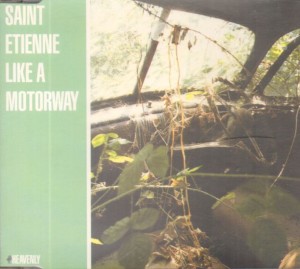
Saint Etienne – “Like a Motorway”
Croydon’s Saint Etienne have changed sounds more than just about any English band whose career ran parallel to that of the Britpop era but not necessarily inside of it—save for Stereolab. Where debut Foxbase Alpha borrowed from house and dub, and 1993’s So Tough found them easing into more sophisticated pop terrain, 1994’s Tiger Bay featured the most prominent use of synths, particularly on the single “Like A Motorway.” Sarah Cracknell’s voice is as cool and restrained as ever, while Bob Stanley and Pete Wiggs do Giorgio Moroder proud with a lush backing driven by arpeggiated synths. It might sound at first like a trip to Ibiza, but it feels like a drive along the French Riviera. – Jeff Terich
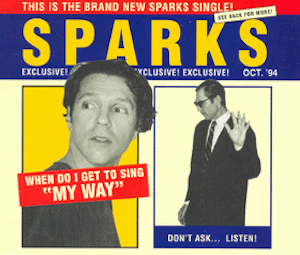
Sparks – “When Do I Get to Sing ‘My Way'”
Ron and Russell Mael have traveled in just about every conceivable rock subgenre in nearly a half century of music-making, maintaining the same level of wit and droll observation throughout. Rarely declining a chance to inflict a puncture wound in grandeur’s rib cage, Sparks delivered an unforeseeably moving synth-pop response to the most narcissistic pop anthem in music history (not counting “I’m Too Sexy,” which was an intentional joke). Mirroring “My Way”‘s catalog of hard-won victories, Russell Mael counts off a rash of difficult close losses and mild humiliations with clever, but not mocking, anguish. Mael reflects on the un-specialness of it all over a consistent electro-pulse: “Sign your name with an X, mow the lawn.” What reads as a self-aware joke on paper winds up being a far-reaching realization, more universal than its source material, and one of Sparks’ all-time best songs. Regrets, you’ll have a ton. – Paul Pearson
2002

The Knife – “Heartbeats”
The synths on “Heartbeats” absolutely grind. They sound like the Dreijer siblings recorded chains dragging across the floor and set that to melody. And despite this, the structure of “Heartbeats” sounds like a pop song: the beat is lightly danceable and the instruments are playing something catchy. But Karin Dreijer does not sound like a pop singer. It’s not just the accent; there’s something alien about her delivery, the way she wraps her vocal chords around phrases like “four hands” and “divine sense.” It’s an uncanny distancing effect for a song that still manages to worm its way into you. After years of listening to “Heartbeats,” you still might not be able to sing along to every word; that’s perhaps because of Dreijer’s accent, but it’s also because of the surreal lyricism. I couldn’t tell you what “Heartbeats” is really about, but it has a chorus startlingly fresh and clear: “To call for hands of above to lean on, wouldn’t be good enough for me.” Even when The Knife made a pop song in the truest sense of the word, it was still about something huge: the inability of religion to fulfill us enough. – Ben Cohn
2003
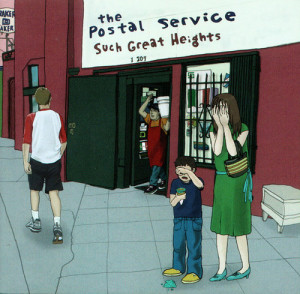
The Postal Service – “Such Great Heights”
Take a moment to remember indietronica. Bands like Stereolab and Broadcast had been marrying melodic indie songcraft with glitchy electronic production since the latter half of the 1990s, but it wasn’t until the new millennium that indietronica really came into its own as the indie scene’s answer to synth-pop. Like the concurrent post-punk revival, the genre had largely sputtered out by the 2010s—although you could think of The xx as an indietronica band—leaving indie and electronic music to drift back to their separate realms.
But genres, just like bands, don’t have to last to produce lasting art, and Give Up—the lone album that Jimmy Tamborello (AKA Dntel) and Death Cab for Cutie’s Ben Gibbard released as The Postal Service—remains indietronica’s beloved masterpiece. Listening to it now, it sounds like a window in time to the early 2000s, and nowhere is the view clearer than on “Such Great Heights,” which can summon memories of TV shows (Veronica Mars, Grey’s Anatomy), commercials (Kaiser Permanente, the actual United States Postal Service) and your own personal history. Gibbard’s starry-eyed lyricism and Tamborello’s bubbling electronic instrumentals perfectly align like the freckles in a loved one’s eyes, with Gibbard singing (for once) about love’s highs rather than its lows. It’s hard to say if The Postal Service could have recorded a second classic, but then again, scores of subsequent artists, both indie and electronic, have failed to scale Give Up‘s great heights or write a song as indelible as “Such Great Heights” even once. Lord knows how many times Owl City has tried. – Jacob Nierenberg
2005

Ladytron – “Destroy Everything You Touch”
The leap that Ladytron made with their 2005 album Witching Hour was something like if Depeche Mode went from Speak & Spell to Violator in less than half the time. For all their electroclash charm, campy lyrics and robotic cosplay, Ladytron had greater ambitions that blew wide open with their third album. “Destroy Everything You Touch” is the breakout single of the bunch, a heavy pulsing pop powerhouse that’s a little bit shoegaze, a little bit industrial, and definitely a lot darker than they’d previously ever hinted at. There are no b-movie robots to be found here, just an exquisite goth-pop production. – Jeff Terich
2006
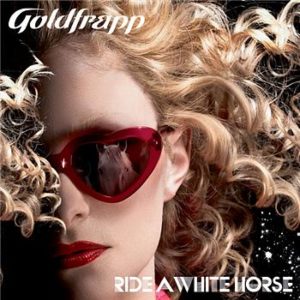
Goldfrapp – “Ride a White Horse”
Not everyone can trade the Cocteau Twins for T. Rex, and then T. Rex for Marlene Dietrich so seamlessly, but British duo Goldfrapp made high art of trashy electro and found legitimate glamour in their glam-pop. Though not without a wink—the video for this Supernature highlight found Alison Goldfrapp walking the catwalk with toilet paper on her heel, even while the single itself pared down their earlier success with gaudy electroclash down to a streamlined, even dreamy pop transcendence. It’s not their most famous blend of big synthesizers, big drama and bigger hooks, but it is their best. – Jeff Terich
2007
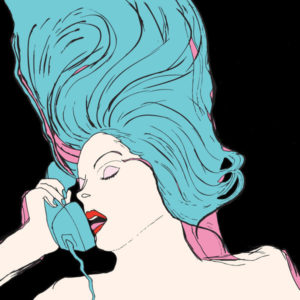
Chromatics – “I Want Your Love”
In hindsight it feels a little on the nose that Johnny Jewel was considered for scoring Nicolas Winding Refn’s Drive. After all, Chromatics’ 2007 album Night Drive was pretty much that. But more than just moody synthwave vibes and flashes of neon, that album presented a turning point for the group, who just a few years prior were making raucous punk rock. Jewel’s turn toward glossier synth-driven textures led to their sprawling, quasi-conceptual 2xLP rebranding, featuring highlights such as this, a pulsing, just-this-side-of-house bit of pop ecstasy that juxtaposes Kraftwerkian synth twinkle against Cure-like post-punk guitars. – Jeff Terich
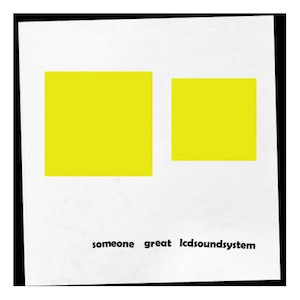
LCD Soundsystem – “Someone Great”
James Murphy rose to prominence with a club anthem about feeling old and out of touch, and followed that up five years later with an album with two titanic centerpieces about grief and losing touch with the ones you love. “Someone Great” is one of those two epic pieces, a bit of Kraftwerkian drama touched up with glockenspiel that finds Murphy numb to the realities of mourning: “The coffee isn’t even bitter/Because…what’s the difference?” There’s a profound beauty in this matter-of-fact examination of the cruel nature of life and death, perhaps because the music itself is some of the prettiest and most moving of Murphy’s career. – Jeff Terich
2008
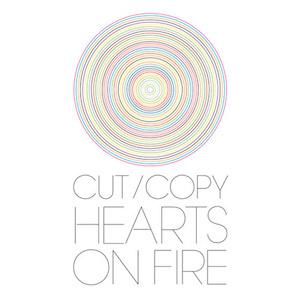
Cut Copy – “Hearts on Fire”
Australian group Cut Copy sneaked onto blogs at the tail end of electroclash and just in time for whatever the hell “blog house” was, but their sound always owed a lot more to New Order than Daft Punk. House elements creep into “Hearts on Fire,” the highest peak on the consistently stunning In Ghost Colours, but despite the updated technology and clipped vocal samples, more than anything it feels a descendant of New Order’s rolling-in-Ibiza sound on Technique, complete with their best Peter Hook bass imitation. The only element that doesn’t is the ’80s-ballad saxophone that sneaks in, but that’s the thing about parties: You might just wake up with someone or something you don’t remember bringing home. – Jeff Terich
2010
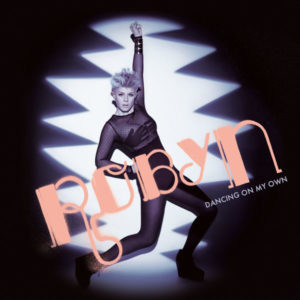
Robyn – “Dancing on My Own”
There isn’t much left to say about “Dancing On My Own.” We could spend hours talking about the integral role Robyn played in the rise of poptimism and the blueprint she set for everyone from Charli XCX to Carly Rae Jepsen: indie popstars who are arguably indie and barely stars. They are pop for pop music’s sake, a niche Robyn created, perhaps with this song alone. We could also waste time trying to say that this is just a song, whatever that means. The breakout single from 2010’s Body Talk, “Dancing On My Own” is not just a song. It’s a great song—an all-timer to be exact. It’s in the tiny details: the way the staccato bassline is distorted just enough or the perfect number of beats in the drum break between the bridge and the final chorus. It’s also in the big picture: the way the song simmers during the verses or the emotion packed into “I’m right over here, why can’t you see me?” But most of all it’s that elusive thing about great pop songs: a melody that, no matter how many times you hear it, never gets old. I’ve heard “Dancing On My Own” hundreds of times since it came out, and yet it still hits the pleasure centers in my brain like it’s the first listen. – Ben Cohn
2011
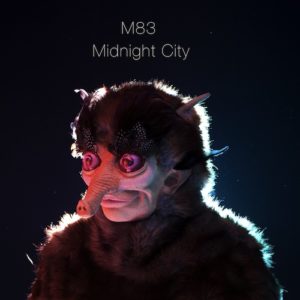
M83 – “Midnight City”
Pop quiz: What’s the best French synth-pop song of the 21st century?
Daft Punk’s “One More Time”? Sorry, wrong answer. “One More Time” is an absolute banger, no doubt—one that never fails to get ravers moving like John Travolta in Saturday Night Fever—but it’s a house song through and through, from its thumping four-on-the-floor beat to its breakdown to its relentless groove. It’s a classic, and it is indeed one of the best French songs of the 21st century. It just isn’t a synth-pop song.
The correct answer, M83’s “Midnight City,” is a gleaming juggernaut of a synth-pop song—the kind of synth-pop song that eats other synth-pop songs for breakfast. The secret (if anything about a track this ginormous could be called “secret”) is that it sounds like it was built for the stadium instead of the dancefloor; it packs a hook that hits with the force of an EDM drop, and its climactic, Clarence Clemons-sized saxophone solo has lost none of its capacity to thrill even nine years later. “Midnight City” is the best French synth-pop song of the 21st century, and there’s nothing else that comes close. But more than that, it’s legitimately one of the best synth-pop songs ever, from anywhere. – Jacob Nierenberg
2012
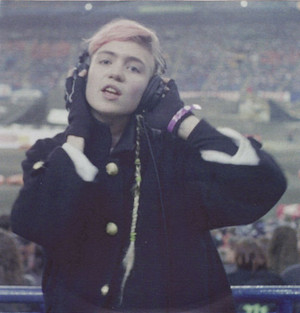
Grimes – “Oblivion”
This isn’t the first time a critically acclaimed female performer addressed sexual harassment and assault in song (cf. “Me and a Gun” by Tori Amos), but it might be the sunniest-sounding cut ever made about these affronts. Her wordplay could be a critique of herself or her attacker, or even a disguised swing and a miss at some actual (fictional) relationship. Meanwhile, her rumbling synth parts run a sinister parallel to her vocal chirps and coos. This moment in Grimes’ homegrown chillwave catalog is a master class in contrast. – Adam Blyweiss
2013
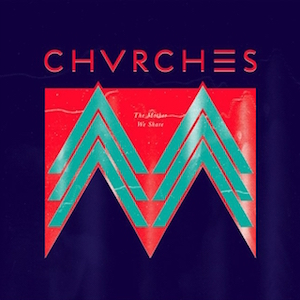
Chvrches – “The Mother We Share”
There’s a moment in the beginning of “The Mother We Share” that tells you exactly what kind of song you’re listening to. It all starts with Lauren Mayberry’s vocals chopped up and jumping around the scale, a symphony of harmonic chaos. Some robotized claps begin to structure the track, but they’re a red herring. At 0:11, there are four successive drum hits, and suddenly everything comes into sharper focus: a swooning synth pop ballad about families, biological or chosen. “The Mother We Share” is a song that breathes, expanding and contracting with a certain tragic life conjured by Mayberry’s lyrics; little expressive turns of phrase like “When it all fucks up you put your head in my hands, it’s a souvenir for when you go.” – Ben Cohn
2014

Future Islands – “Seasons (Waiting on You)”
It’s a relatively simple song: new wave synths, bass, drums, and of course, Sam Herring’s signature impassioned croon/growl. Thanks to a Letterman debut in which Herring beat his breast, yelped, and danced with absolutely no self-consciousness, it became an indie hit. Watching Herring’s facial expressions onstage, you’d think he was an actor. When you hear his voice on the recording, it’s clear he’s laying it all out on the court, as he sings about a failed relationship. I say “sings about” because a more specific term—laments, celebrates, yearns for—feels inappropriate. Much like James Brown’s “Please, Please, Please,” trying to categorize it emotionally feels reductive. The lead single from 2014’s Singles, like the performance on Letterman, like many new wave hits from the ’80s, is melodramatic, but it’s an earnest kind of melodrama rather than an artful kind, and that’s what makes it great.- Tyler Dunston
2018
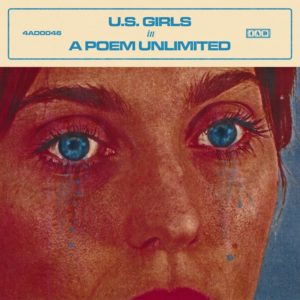
U.S. Girls – “Poem”
Meghan Remy is a difficult artist to pin down stylistically, and that’s by design. U.S. Girls encompasses everything from exotica to orchestral pop to disco and funk. The latter two are primarily what defined the transcendent In A Poem Unlimited, wrapping social commentary in tracks that bumped with rock-solid grooves. But then there was “Poem,” a glittery, arpeggio-riding moment of capitalist-critiquing glory. Remy asks, “What are we gonna do to change?” imploring her audience to think more critically about the kind of future we want. It won’t come easy, perhaps, but the major key transcendence of the song offers the motivation to keep striving. – Jeff Terich
2019
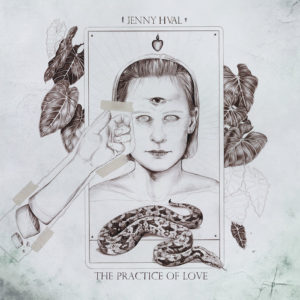
Jenny Hval – “Ashes to Ashes”
Norwegian singer/songwriter Jenny Hval’s greatest asset is her curiosity. She tends to treat each album less with the idea of conquering a topic or an approach than to explore it. With 2019’s The Practice of Love, that involved getting her hands dirty with the mechanics of electronic music, but adding layers of synthesizers to her repertoire, it turns out, only makes a good thing more breathtaking. “Ashes to Ashes” is a singular pop triumph, showcasing the pure beauty of synthesized music rather than the novelty or sheer physicality of it. We didn’t choose this as our song of the year in 2019 for nothing. – Jeff Terich
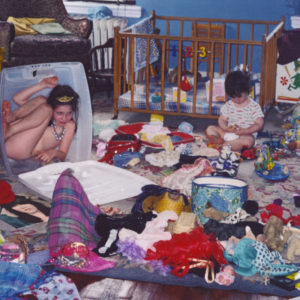
Sharon Van Etten – “Seventeen”
Sharon Van Etten, like Jenny Hval, didn’t start out making synth-pop. And if we’re being honest, here, the primary instrument on “Seventeen,” a technicality that also kept Joe Jackson’s “Steppin’ Out” off this list. But these rules aren’t set in stone, and the rules of genre are meant to be broken. This standout from Van Etten’s Remind Me Tomorrow is an earnest ode to a younger self, for which she offers a word or two of comfort: “I know what you’re gonna be…I wish I could show you how you’ve grown.” But the song itself is an exercise in expansion and escalation, a heavy backing of synthesizers growing bigger and bigger until they crowd the entire landscape, squealing and shrieking until the machines sound as if they’re on the verge of collapse. – Jeff Terich
Support our Site—Subscribe to Our Patreon: Become one of our monthly patrons and help support an independent media resource while gaining access to exclusive content, shirts, playlists, mixtapes and more.


“Their sole album Upstairs at Eric’s”…. Um, You and Me Both?
Whoops, good catch. Correcting…
Great list, and thorough. Missing some Cabaret Voltaire, but no list can ever be fully comprehensive. Interesting that Roxy Music/Eno/Bowie are all absent, but perhaps too obvious ?
Anyway, you included YMO and Jarre which a lot of people usually overlook. Grimes and Chvrches are amazing new(ish) acts.
How do you leave Howard Jones and Thomas Dolby off of a list like this?
Saint Etienne’s Tiger Bay is a brilliant, strange and subversive album. Like many of the tracks, Like A Motorway is a re-arrangement of a British folk song – ‘silver dagger’. https://www.youtube.com/watch?v=GOZlWkY2MbE
From México I founded and played for many years as Los Perros Flotantes (the Floating Dogs). Hope you hear my music someday. Why did you left canadians Out? Men without hats and images in vogue were worth hearing.
Gershon Kingsley – Popcorn 1969
https://www.youtube.com/watch?v=OSRCemf2JHc
No Ultravox? No Blancmange?
Nice list
shame you forget the moment that began this thing called synth pop, meaning “Popcorn”
https://youtu.be/NjxNnqTcHhg
This was the original popcorn
https://www.youtube.com/watch?v=OSRCemf2JHc
Mark Score?
What??? Não tem Alphaville???
How about Laid Back’s White Horse? One of the most sampled tunes ever….
nice, but should’ve included The Faint (among other glaring omissions)
Royksopp, Empire of the Sun , Patrick Cowley, MGMT,LaRoux ,Vitalic,Client, Miss Kittin ,Faze Action…..
Oscillations by The Silver Apples from way back in 1968 should be here
That’s actually a really good call. Definitely an important “roots” record.
I expect Alphaville, Ultravox, Cetu Javu etc etc were on the list
This list completely ignores Covenant, Apoptygma Berzerk, and VNV Nation in the late 90s and early 2000s. Lots of other questionable choices in the list as well—Herbie Handcock’s “Rockit”? Are you kidding me? Not really impressed. It’s a bit annoying that lists, in general, often seem to ignore what was happening in the more underground EBM based scene that was wearing its synth-pop flag in the 90s before it was cool again. To ignore that scene in 90s early 2000s is a bit egregious especially considering some of the other choices on the list fall well outside of Synth-pop and would never claim it if asked.
where are those classics?
Human League- Don’t You Want Me
Ultravox-Vienna
Yazoo-Don’t Go
Eurythmics- Here Comes The Rain Again
Gary Numan-Cars
Depeche Mode-Never Let Me Down
Art of Noise-Moments In Love
And of course Popcorn as a beginning.
Simple Minds is not convincable. They’ve got better tunes like I Travel and Someone Somewhere in Summertime for that era.
btw AFlock of Seagull’s I Ran is a powerful song but definetely not a synth-pop tune.
So many classics missed, and credit not given to many originators, many of whom produced entire albums of synthpop classics:
Ultravox – Vienna/ Thin Wall/ Reap the wild wind/ The voice
Human League – pretty much everything on DARE!, plus Romantic?, Octopus, and the hugely underrated Secrets.
Space – Magic Fly
Harold Faltermeyer – Axel F.
Blancmange – Living on the Ceiling/ Waves/ Blind Vision
Thomas Dolby – Science/ Submarines/ Europa/ Hyperactive etc.
Howard Jones – Hide and Seek, New Song, Things can only get better etc.
Nitzer Ebb – Murderous/ Chant
Nine Inch Nails – Head like a hole
Propaganda – Duel
and a whole bunch of other missed classics.
Generally a good, comprehensive list for beginners, but agreed with some comments…I think of Blancmange, Alphaville, Dead or Alive (Um…Youthquake??), Scritti Politti, Yello, early Ministry, Cabaret Voltaire’s more produced stuff…even Taco(!), Howard Jones, Thomas Dolby, and Prince. How about something from Nitzer Ebb, Nine Inch Nails (a Pretty Hate Machine track or later…”Closer”)? There’s also a ton of late-80’s/early 90’s stuff completely overlooked like Technotronic, The Shamen, The Orb, Orbital, 808 State, KLF, Primal Scream(!), Saint Etienne, the whole acid-house scene, S’Express, Bomb the Bass, M/A/R/R/S, Chemical Brothers, Fatboy Slim, The PRODIGY?!?, Bjork, Madonna (Ray of Light/Music era at least), Kylie, Daft Punk, Royksopp, Air, M83, La Roux, Lady Gaga. I know you only had so many numbers, but there’s a lot more…
Oh I see Prince and M83 in there…My bad. Ultravox was a good call from someone else…
Saint Etienne too LOL sorry
We made a conscious decision to leave off house, techno, industrial/EBM, dance pop etc. as they’re each genres that warrant their own space and potentially their own features at some point, but sure, some of these artists deserve mention here.
I know that you wrote this article with the best of intentions and I know that I am harping on here but as I’m sure you can tell I am a bit passionate about this subject and have a few things to get off my chest. I’m 43 and a published electronic musician who has made synthpop and EBM for more than 20 years. My relationship with synthpop goes back to when I was a young child and first heard A-ha’s “Take On Me” when I was in primary school in the 80s.
That being said, as an electronic/EBM and synthpop musician, I find the suggestion that it’s okay to exclude the EBM/industrial scene in an essential synthpop list a gigantic and rather baffling mistake. To be specific, your list makes it seem like nothing happened in synthpop between 1995 and 2001 which is just untrue and feels like a middle finger to me and those who participated in synth-pop culture during that time. The claim that EBM is omitted because it needs its own article is also a very poor and rather arbitrary excuse for not including bands that are EBM friendly or have their origins in EBM. The truth is, EBM is an essential part of synthpop in the 90s. Don’t just take my word for it, read “Assimilate: a critical history of industrial music” by Alexander Reed. He makes a clear case for it there (page 269 to be specific).
To ignore bands in this scene is especially hypocritical since the article stretches the understanding of synthpop, cherry picking certain artists for reasons less grounded and then goes back on this principle when it benefits the list. One particularly telling sign is the decision to include Fad Gadget’s “Collapsing New People” with a comment emphasizing the connection between industrial and synthpop as a justification. Why is this a relevant connection here but not elsewhere? It’s an odd choice for a song given that Fad Gadget’s catalog includes many more tracks typical of synthpop. More perplexing—and perhaps frustrating—is the inclusion Magnetic Fields (whose catalog feels more at home with indie-folk or shoegaze than synthpop) for using a synth on one song, yet groups like Beborn Beton (whose sound is explicitly predicated on the consistent use of synthesizers and other aesthetically coherent aspects of synthpop) are left out of the conversation due to a remote association with EBM? I know this feels like nagging but this kind of stuff is a pet peeve of mine. As a synthpop fan during those missing years, I managed to purchased many a synthpop fanzine. Not once was there an article about Magnetic Fields. There may have been mentions here and there of Future Bible Heroes (an actual Magnetic Fields synthpop related project) but they didn’t really participate in the scene and moreover, you did not include them in the list here. So, not including anything from bands like Mesh, SPOCK, Wolfsheim, Anything Box or even Covenant is akin to saying that all the music I was listening to from 94 to 2002 doesn’t count or exist. Again, you may not have intended this but it’s there nonetheless. For whatever reason, it seems that bands associated with the industrial underground EBM scene, particularly during those years, just do not get any credit or coverage in magazines. It’s like you have no idea these groups even exist. Alternative Press used to include little blurbs about the EBM world but that faded by 1998.
This really makes the comment indicating that you purposefully didn’t include EBM (or whatever you want to call it) seems like an ad hoc justification—which historically feels like snobbery— for lack of knowledge about what was an actual synthpop scene in the 90s. I’ve got to wonder if you would do the same for EBM if you got the chance.
Look, the idea that EBM deserves its own article but not a mention on a synthpop list seriously needs to be reconsidered: If the underground “industrial-EBM” scene is not part of the bigger synthpop story then why did so many bigger synthpop artists play shows in industrial venues and cater to those fans? Why do that?
Why was there so much crossover between those worlds? When Dead or Alive, Information Society, Fad Gadget, Gary Numan, and Soft Cell re-emerged in the nineties and early aughts, why did they play big goth-EBM festivals or release albums on underground EBM-industrial labels? Why did Gary Numan release a remix album featuring Leæther Strip and Razed In Black? As recent as 2013, O.M.D. was remixes by Metroland, further establishing a connection. The answer might be that these established synthpop acts recognized the “EBM/scene” as the inheritor of synthpop’s legacy thereby legitimizing it as a part of synthpop. Maybe this is why, when I saw Gary Numan in Los Angeles in 1998, Spahn Ranch and Switchblade Symphony opened for him.
Didn’t it also seem like a natural progression for EBM artists to merge synthpop with EBM and create the genre Futurepop in the late nineties and early aughts? To this day, it wouldn’t be out of place to see New Order’s Peter Hook DJing an industrial club or to see Alan Wilder’s Recoil playing gigs with Front Line Assembly’s Rhys Fulber or Haujobb’s Daniel Myer. Back in the 80s, Portion Control opened for Depeche Mode. So did Nitzer Ebb and Front 242.
lol chill
I’m just going to leave this 1998 masterpiece right here:
https://www.youtube.com/playlist?list=PLq8z1xl97SZ5tICa6pHa7uvNBW26kWF4D
This is in fact a solid list, bravo! One could argue with a few tracks here and there, but given the remit, this is a good selection. As mentioned by other posters, Propaganda’s A Secret Wish is really the peak synth pop record – high tech and wonky, great songs, arty and European, all star production team, magnificently strange, and still somewhat obscure. As much as I like The Chauffeur, maybe A Dream within a Dream would have fit that slot a bit better?
Solid list.
I would add The Faint
Also missing- “Modern” sytnhpop circa the turn of the century- A Different Drum stuff- Cosmicity, Color Theory, etc.
Excellent list! Please allow me to suggest a few others that wouldn’t be out of place on this roll:
Alphaville (Forever Young)
Thomas Dolby (“She Blinded Me with Science” or pretty much anything from The Golden Age of Wireless)
The Human League
The Art of Noise
The Chemical Brothers (Dig Your Own Hole)
Björk (Debut or Homogenic)
Everything But the Girl (Walking Wounded or Temperamental)
Radiohead (Kid-A is pretty much synths all the way down)
Panda Bear (Person Pitch and Tomboy)
Why didn’t you include Sparks #1 Song in Heaven? That was a Giorgio Moroder collaboration and was Sparks first foray into the synth world.